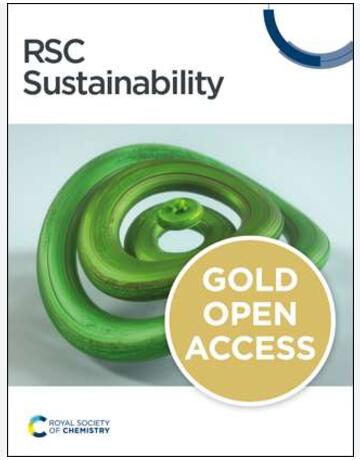A Study on the Mechanisms of Coal Fly Ash to Improve the CO2 Capture Efficiency of Calcium-Based Adsorbents
IF 3.3
3区 环境科学与生态学
Q2 ENVIRONMENTAL SCIENCES
引用次数: 0
Abstract
Utilizing calcium-based adsorbents for CO2 adsorption through cyclic calcination/carbonization is one of the most cost-effective methods for carbon emission reduction. In order to improve the cycle stability of the adsorbents and the capture efficiency of CO2, this study used industrial solid waste coal fly ash for the hydration treatment of calcium-based adsorbent to explore the variations in the cyclic adsorption performance of the adsorbent under different doping ratios and hydration conditions. By means of various characterization techniques, the microscopic mechanism for improving the performance of the modified adsorbent was analyzed from the perspectives of chemical composition, physical structure, and surface functional groups of the adsorbents. The results demonstrated that the modification of coal fly ash could significantly enhance the carbonation performance and cycle stability of the adsorbent in multiple CO2 capture processes. The modified material doped with 5% coal fly ash had the highest total CO2 adsorption capacity, which increased by 13.7% compared to before modification. Additionally, the modified material doped with 10% coal fly ash exhibited the strongest cyclic adsorption capacity, which was 14.0% higher than that before modification, and the adsorption attenuation rate decreased by 32.2%. The characterization results showed that the reaction between calcium oxide and coal fly ash formed CaSiO3 and Ca12Al14O33 during the modification process, which was the primary reason for the improvement in the CO2 capture performance of the modified materials. This study provided a new perspective on the resource utilization of solid waste fly ash and efficient CO2 capture.煤粉灰提高钙基吸附剂二氧化碳捕集效率的机理研究
利用钙基吸附剂通过循环煅烧/碳化吸附二氧化碳是最具成本效益的碳减排方法之一。为了提高吸附剂的循环稳定性和二氧化碳的捕集效率,本研究采用工业固体废弃物粉煤灰对钙基吸附剂进行水化处理,探索不同掺杂比和水化条件下吸附剂循环吸附性能的变化。通过各种表征技术,从吸附剂的化学成分、物理结构和表面官能团等角度分析了改性吸附剂性能改善的微观机理。结果表明,粉煤灰改性能显著提高吸附剂在多种二氧化碳捕集过程中的碳化性能和循环稳定性。掺杂了 5%粉煤灰的改性材料具有最高的二氧化碳总吸附容量,与改性前相比提高了 13.7%。此外,掺杂 10% 粉煤灰的改性材料的循环吸附能力最强,比改性前提高了 14.0%,吸附衰减率降低了 32.2%。表征结果表明,在改性过程中,氧化钙与粉煤灰反应生成了 CaSiO3 和 Ca12Al14O33,这是改性材料二氧化碳捕集性能提高的主要原因。这项研究为固体废弃物粉煤灰的资源化利用和二氧化碳的高效捕集提供了新的视角。
本文章由计算机程序翻译,如有差异,请以英文原文为准。
求助全文
约1分钟内获得全文
求助全文
来源期刊

Sustainability
ENVIRONMENTAL SCIENCES-ENVIRONMENTAL SCIENCES
CiteScore
6.80
自引率
20.50%
发文量
14120
审稿时长
17.72 days
期刊介绍:
Sustainability (ISSN 2071-1050) is an international and cross-disciplinary scholarly, open access journal of environmental, cultural, economic and social sustainability of human beings, which provides an advanced forum for studies related to sustainability and sustainable development. It publishes reviews, regular research papers, communications and short notes, and there is no restriction on the length of the papers. Our aim is to encourage scientists to publish their experimental and theoretical research relating to natural sciences, social sciences and humanities in as much detail as possible in order to promote scientific predictions and impact assessments of global change and development. Full experimental and methodical details must be provided so that the results can be reproduced.
文献相关原料
公司名称
产品信息
阿拉丁
KBr
 求助内容:
求助内容: 应助结果提醒方式:
应助结果提醒方式:


